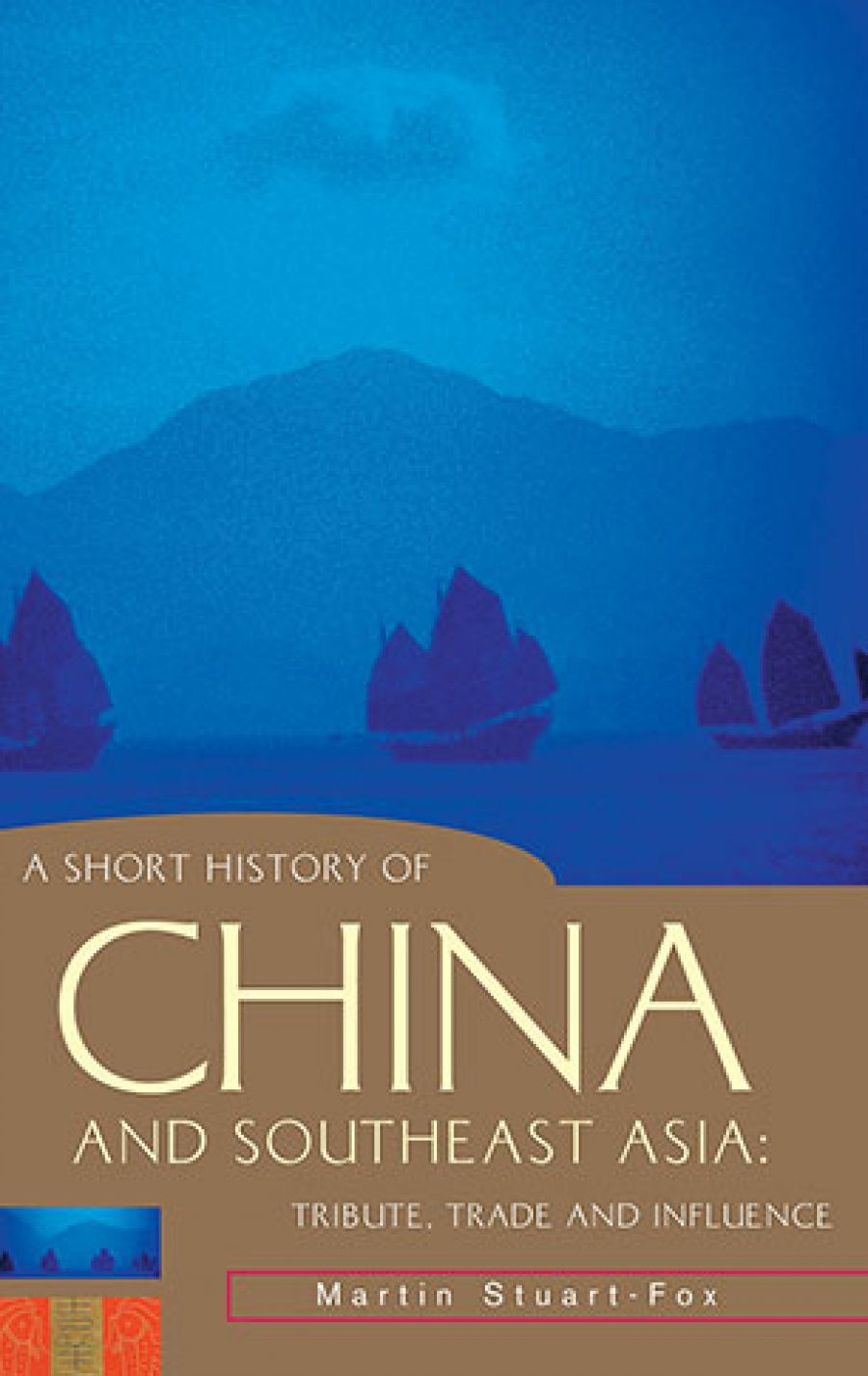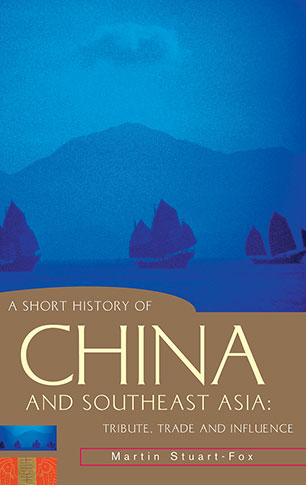
- Free Article: No
- Contents Category: Asian Studies
- Review Article: Yes
- Article Title: Debatable Scenarios
- Online Only: No
- Custom Highlight Text:
What interesting times we live in. Indeed, they are likely to become more interesting. One of the major issues for the new century is China’s emergence as a great power. How will China deal with the rest of the world? Should China be contained, confronted? How will its enhanced power be shown? How will governments wrestle with that power?
Martin Stuart-Fox outlines this problem from the multiple viewpoints of China and of South-East Asia, and adopts a long historical perspective. His tightly organised book covers around 2000 years of relationships between China and the many kingdoms and countries of South-East Asia. He argues, as a good historian should, that the past will powerfully shape the future: ‘a new pattern of power relations is emerging, one that harks back in significant ways to earlier times.’
- Book 1 Title: A Short History of China and Southeast Asia
- Book 1 Subtitle: Tribute, trade and influence
- Book 1 Biblio: Allen & Unwin, $29.95 pb, 278pp
- Book 1 Cover Small (400 x 600):

- Book 1 Cover (800 x 1200):

Stuart-Fox has had a fascinating career: after taking a science degree, he was a journalist for years and covered the Vietnam War. He returned to university, research and teaching. Now professor of history at the University of Queensland, he is a specialist on Laos and Cambodia, with various works on their politics and histories. He has further interests in theories of history and Buddhist philosophy. This book is a new venture for him, with its span of topics and centuries plus its emphasis on the abiding relevance of traditional relationships between China and South-East Asia.
Stuart-Fox believes that China is likely to project its power. But China is hemmed in on three sides by large, resistant powers: Japan, Russia and India. Power projection is most likely to occur in South-East Asia, where China has had centuries of bilateral relations based on the tributary relationship. If China decides to enforce its claim on those troublesome specks, the Spratly Islands, then the balance of power in South-East Asia will shift.
Stuart-Fox argues that the China of today is still much in the mould of the empires that preceded the Maoist takeover of 1949. It is still an empire, ruling over non-Chinese subject peoples, for example in Xinjiang and Tibet. The Chinese version of Marxism provided ideological content for decades, but has now mostly been replaced by a resurgent Chinese nationalism, with which South-East Asian nations have little in common. Like it or not, those kingdoms and nations have had to adjust to that powerful, arrogant, interfering empire for centuries, even though most of their world views differed markedly from that of China (Vietnam being an exception). The tributary relationship involved recognising the centrality of the Chinese emperor through rituals, gifts, promises of trade and stability, and sometimes entreaties for the Chinese military either to stay at home or to intervene. South-East Asian countries sent ambassadors ready to kowtow – ‘three kneelings and nine prostrations’. Later colonial envoys, scandalised at these rituals of subservience, tried to modify them. In 1793 Lord Macartney of Britain succeeded in having his letter presented on only one knee, but his rejection of tributary expectations brought no good news for his monarch.
Despite its scope, this is a short book: ten chapters in 245 pages. I see three sections. Initially, the first three chapters set out the problem and the theory, describe the evolution of ‘the Chinese view of the world’, and discuss the period of ‘early relations’ until about 1200CE. Here the different world views of China and the South-East Asian polities found enough compatibility to allow ‘functional bilateral relations régimes that tacitly accepted the Chinese world order’.
In the second section, chapters four to eight take up the strengthening, waning, adjustments, changes and contradictions of the next 800 years. The chapters cover: the Mongol expansion (around 1236–1368); seapower, tribute and trade (1368 to 1560); the entry of the Europeans (1511 to 1900); the changing world order (1900 to the communist victory in 1949); and communism and the Cold War (1949 to about 1972).
Thirdly, the last two chapters: ‘Fresh Beginnings’ (are there any old ones?) and ‘Future Directions’. Chapter Nine analyses new flexibilities after Nixon’s China visit in 1972, and introduces strategic issues of the South China Sea. The final chapter looks forward, offering three scenarios for our delectation. It is audacious of Stuart-Fox to identify patterns in such a breadth of time and geography. And as he says too modestly, he is ‘an amateur in the field’. But he wants to provoke informed debate. This is a stylish contribution to that debate. It is not the final answer, but nor does it claim to be.
I read the book straight through as if it were a novel, but will return to individual chapters for more leisurely reading. Teachers will set chapters; students will pore over them. The conclusion should go straight into reading lists.
The book is well presented, with various enlightening pictures. It has good maps, but, irritatingly, they are not listed. Too much Tolkien and Eddings has doubtless rotted my brain, but I like to keep looking at the maps to see where everyone is. Future editions should list them, and include references in the text telling the reader where to look.
Compression and selection have their dangers. Stuart-Fox avoids cluttering his text, but more ‘locating’ dates in the useful introductions and conclusions to chapters would help. I was also alarmed to read that, ‘Indonesia thinks of itself as an Islamic country.’ I don’t think there is any ‘it’ in Indonesia; some sort of ‘they’ would be much better. There is much more complexity in Indonesia and Islam than these eight words suggest. Islam is a problem, too. Recent events have introduced new scenarios that his conclusion hasn’t considered. Futurology dates fast.
Overall, this is a provocative contribution. Enjoy the text; debate the concluding scenarios.


Comments powered by CComment